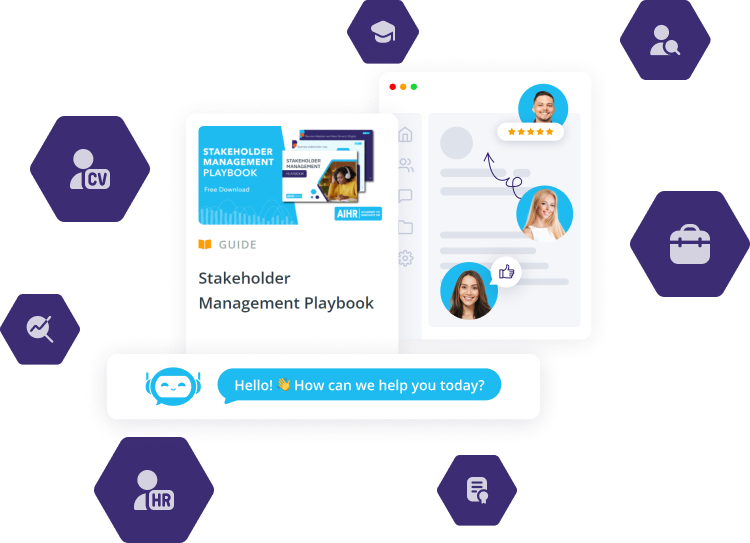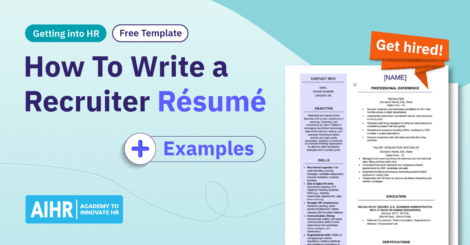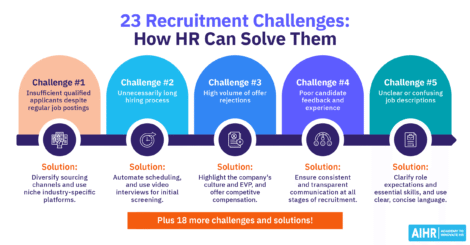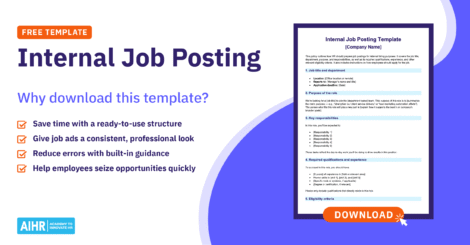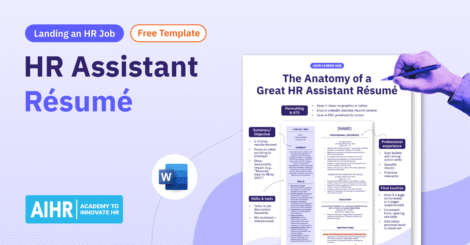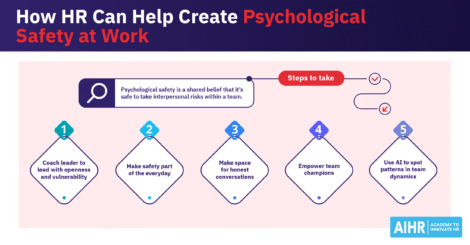Recruitment and retention are two critical drivers of a company’s long-term success. Effective recruitment and retention strategies help organizations improve employee morale, minimize hiring costs and productivity losses, and boost their employer brand and reputation.
This article discusses the connection between recruitment and retention, defines what each involves, and walks through actionable recruitment and retention strategies your HR team can implement to attract, engage, and retain top talent.
Contents
What is recruitment?
What is retention?
How recruitment and retention fit together
The benefits of a strong recruitment and retention strategy
9 recruitment and retention strategies that work together
What is recruitment?
Recruitment is the process of attracting, selecting, and hiring candidates for open roles. It starts with sourcing and identifying potential candidates through job boards, job fairs, employee referrals, social media platforms, and even AI-powered sourcing tools.
The next step is screening, whereby HR reviews résumés, conducts screening calls and assesses applicants’ skills and culture fit before scheduling interviews with shortlisted candidates. The interview stage may include one interview or a series of interviews, which can be one-on-one or structured as a panel.
Finally, the hiring manager must decide which candidate to hire, after which the talent acquisition specialist or external recruiter, who acts as the candidate’s main point of contact, extends the job offer. This also involves getting the new hire to sign their employment contract, answering their questions, and preparing them for onboarding.
Modern recruitment tools
Technology is reshaping how companies find talent. Applicant Tracking Systems (ATS), screening, video interviews, and recruitment platforms are now often part of a recruiter’s standard hiring toolkit.
In addition to traditional sourcing options, new trends like skills-based hiring, project-based assessments, and pre-employment “take-home” assignments are gaining popularity. These allow hiring teams to evaluate candidates based on their work rather than just résumés. This can also be helpful when assessing soft skills, technical agility, and cultural fit.
What is retention?
Retention is the practice of keeping employees engaged, satisfied, and employed long-term. The key components of retention are onboarding and training, recognition and feedback, career development, and work-life balance.
In addition to a stable income, employees want purpose, autonomy, and L&D opportunities. As such, employee retention strategies need to meet these needs. Key retention metrics to track include turnover rate, employee satisfaction scores, employee tenure, and internal promotion rate.
These allow you to spot issues early. For example, a spike in turnover in a certain team or after six months may indicate problems with onboarding, management, or role clarity. Poor retention creates a domino effect that includes higher recruitment costs, productivity loss, lower team morale, and a culture of instability. This can harm customer relations and company financials.
Learn to optimize both recruitment and retention
Build your skills in developing and implementing robust recruitment and retention strategies to attract and retain top talent across your organization.
AIHR’s Strategic Talent Acquisition Certificate Program teaches you how to engage and retain talent, identify and minimize flight risk to boost retention and foster a positive experience throughout the employee life cycle.
How recruitment and retention fit together
Good recruitment and retention strategies aim to build a strong, sustainable workforce. What you communicate about roles, culture, and development opportunities during the recruitment phase must match the reality of the employee experience. Otherwise, new hires may resign in a matter of months, costing the company money, time, and momentum.
Employee engagement starts when candidates apply for the position after reading a job posting. Every step, from application to onboarding, plays a role in how long they’ll stay, making recruitment a crucial set-up for retention.
The benefits of a strong recruitment and retention strategy
An aligned recruitment and retention plan has advantages beyond just keeping employees in their jobs. These include reduced turnover and lower hiring costs, increased quality of hires, improved engagement, morale, and productivity, greater business continuity, and better employer branding.
Fewer exits mean fewer replacements and reduced onboarding costs, while higher-quality hires tend to be better cultural fits, perform better, and remain longer at the organization. Additionally, a good workplace often sees improved engagement, morale, and productivity. This motivates employees to perform well and has a positive impact on the company’s bottom line.
At the same time, long-term employees build institutional knowledge that helps their company grow sustainably, and a better employer branding strategy will inevitably attract top talent.
9 recruitment and retention strategies that work together
Here are nine solid recruitment and retention strategies that can help you attract the best people and help them thrive within your organization:
1. Strengthen your employer brand
Recruitment starts with the company’s reputation. Highlight and clearly articulate your organization’s mission, values, and workplace culture (both online and in-person). A strong employer brand attracts the right candidates and creates pride among current employees, which helps both recruitment and retention.
2. Hire for culture and potential, not just skills
While many skills can be taught, soft skills, values, and motivation are harder to teach or change. Hiring people who align with your company culture and show long-term potential reduces early turnover and cultivates employee development. Focusing on this during the recruiting and interviewing phases can set your organization up for success.
3. Offer competitive and transparent compensation
Candidates seek clarity and fairness. Transparent pay ranges and performance-based incentives attract high performers and keep them from looking elsewhere. Keep in mind that pay transparency laws have become more stringent, so make sure you stay updated on and compliant with any pay-related laws and regulations.
4. Build a strong onboarding program
First impressions can make or break an employee’s experience. A clear, comprehensive, and structured onboarding process can set the tone for long-term employee retention. This process should include clear expectations, structured training, cultural integration, and a warm welcome to remind new hires that they made the right choice.
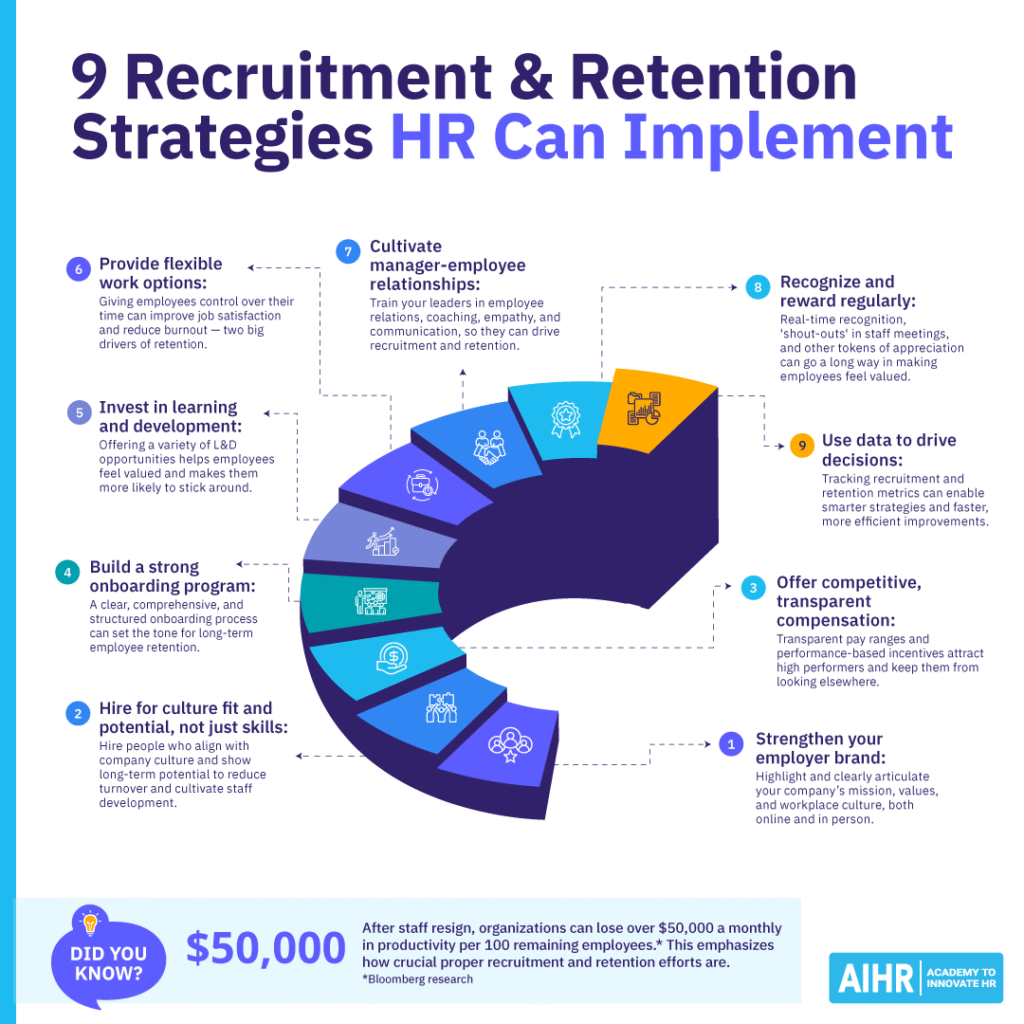
5. Invest in learning and development
Most employees want to learn and grow. Offering a variety of L&D opportunities helps employees feel valued and makes them more likely to stick around. These opportunities can include viable career pathways, tuition assistance, job shadowing, a leadership development plan, and mentorship programs.
6. Provide flexible work options
Whether it’s remote or hybrid work or flexible hours, giving employees control over their time can improve satisfaction and reduce burnout, two big drivers of retention. You can even consider developing telework policies that clearly define hybrid and remote work requests and parameters even more clearly.
7. Cultivate manager-employee relationships
You may have heard the saying that people leave managers, not companies. Train your leaders in employee relations, coaching, empathy, and communication. This will enable them to drive both recruitment and retention and be a true HR Business Partner (HRBP) to their client workgroups.
8. Recognize and reward regularly
Don’t wait for annual reviews to provide employees with feedback and recognition. Real-time recognition, ‘shout-outs’ in staff meetings, and other tokens of appreciation can go a long way in making employees feel valued. Regular recognition and rewards show employees your company’s commitment to staff morale and motivation.
9. Use data to drive decisions
Track recruitment metrics, such as time to fill and offer acceptance rates, as well as retention indicators like engagement scores and reasons for resignation. Having detailed data on different aspects of recruitment and retention at your organization can drive smarter strategies and faster, more efficient improvements.
To sum up
The relationship between recruitment and retention is unique, and both are essential to building committed, motivated, and high-performing teams. By combining your recruitment promises with your retention strategy, you can not only attract top talent but also create an environment where employees want to stay, grow, contribute, and even refer other people to the company.
When recruitment and retention strategies work together, you can reduce turnover and hiring costs and cultivate a culture where people feel seen, supported, and excited to show up every day. That’s a win-win for employees, HR, the company, and its customers.


